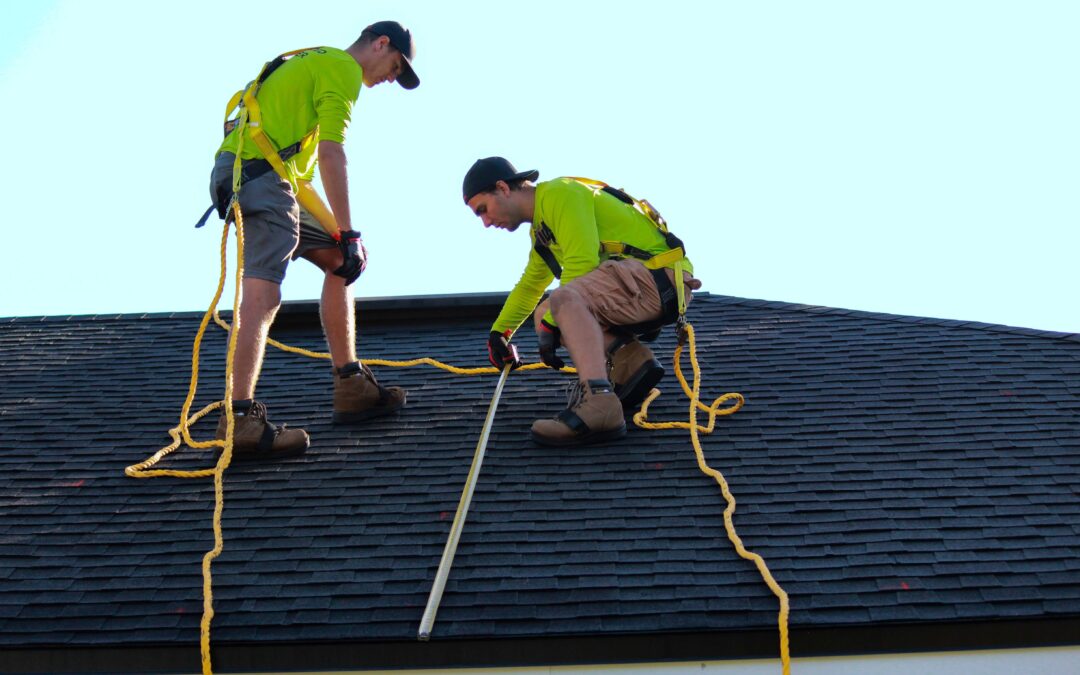Having a reliable and durable roof over your head is essential for the comfort, safety, and value of your home. In Austin, TX, the unique weather and climate considerations add an extra layer of complexity to choosing the right roofing materials and services. This ultimate guide aims to provide you with the knowledge you need to make informed decisions about roofing services in Austin, ensuring that you get the perfect roof for your home.
Importance of a Reliable Roof
A reliable roof is crucial for protecting your home from the elements and maintaining a comfortable living environment. A well-constructed roof will prevent leaks, resist damage from storms, and provide insulation to keep your home warm in the winter and cool in the summer. Furthermore, a high-quality roof can improve the curb appeal and resale value of your home, making it a sound investment for any homeowner.
Unique Weather and Climate Considerations in Austin, TX
Austin, Texas, is known for its hot summers, mild winters, and occasional severe storms. With temperatures frequently exceeding 100°F in the summer and the potential for hail, strong winds, and even tornadoes, it is essential that your roof is built to withstand the unique weather challenges of the region. The right choice of roofing materials and proper installation will ensure that your home remains protected and comfortable year-round.
Purpose and Scope of the Guide
This comprehensive guide will provide you with insights into the various roofing materials available, their pros and cons, and what to look for when selecting a roofing contractor in Austin, TX. Our goal is to help you navigate the roofing process with confidence, allowing you to make the best decision for your home and budget. Whether you’re building a new home, replacing an old roof, or simply in need of roofing repairs, this guide will serve as a valuable resource for all your roofing needs in Austin, Texas.
Roofing Materials and Options
Asphalt Shingles
Composition
Asphalt shingles are the most common roofing material in the United States. They consist of a fiberglass or organic mat coated with asphalt and topped with granules, which provide color and UV protection.
Pros and Cons
Asphalt shingles are popular due to their affordability, ease of installation, and a wide range of colors and styles. They also offer decent fire and wind resistance. However, they are not as durable as other materials and may not be the most environmentally friendly option.
Cost and Lifespan
The cost of asphalt shingles varies depending on the quality and style, but they are generally more affordable than other roofing materials. Their lifespan ranges from 15 to 30 years, depending on factors such as installation, maintenance, and climate.
Metal Roofing
Types of Metal
Metal roofing is available in a variety of materials, including steel, aluminum, copper, and zinc. Each material has unique characteristics, such as weight, corrosion resistance, and appearance.
Pros and Cons
Metal roofs are known for their durability, energy efficiency, and low maintenance requirements. They can also be recycled at the end of their lifespan. However, they can be more expensive than other materials and may require specialized installation.
Cost and Lifespan
The cost of metal roofing varies depending on the type of metal and the style of the panels. While it may be more expensive upfront, its lifespan of 40 to 70 years can make it a cost-effective choice in the long run.
Clay and Concrete Tiles
Composition
Clay and concrete tiles are made from natural materials and are often used in Spanish, Mediterranean, and Southwestern style homes. Clay tiles are made from molded and baked clay, while concrete tiles are made from a mixture of cement, sand, and water.
Pros and Cons
These tiles offer excellent durability, fire resistance, and energy efficiency. They also come in a range of colors and styles. However, they can be heavy, requiring additional support, and may be more expensive than other options.
Cost and Lifespan
Clay and concrete tiles can be more expensive than asphalt shingles or metal roofing, but their lifespan of 50 to 100 years can make them a worthwhile investment for homeowners seeking a long-lasting roofing option.
Slate Roofing
Composition
Slate is a natural stone that is quarried and cut into thin, flat tiles. It is an elegant and timeless roofing material that has been used for centuries.
Pros and Cons
Slate roofs are incredibly durable, long-lasting, and low maintenance. They also offer excellent fire resistance and can enhance the curb appeal of your home. However, slate is a heavy material, and its high cost can be prohibitive for some homeowners.
Cost and Lifespan
Slate roofing is among the most expensive roofing materials, but its longevity of 75 to 200 years can make it a worthwhile investment for those seeking a truly lasting roof.
Green Roofing Options
Solar Panels
Installing solar panels on your roof is an eco-friendly option that allows you to generate clean, renewable energy for your home. In addition to reducing your carbon footprint, solar panels can help lower your energy bills and potentially increase your home’s value.
Cool Roofs
Cool roofs are designed to reflect more sunlight and absorb less heat than traditional roofs, helping to keep your home cooler and reduce energy consumption. They can be made from various materials, including metal, reflective asphalt shingles, or specialized roof coatings. Cool roofs are particularly beneficial in hot climates like Austin, TX, where they can significantly reduce cooling costs.
Green Roofs
Green roofs, also known as living roofs, involve the installation of a layer of vegetation on top of a waterproofing membrane. Green roofs can improve air quality, provide insulation, and reduce stormwater runoff. While green roofs require more maintenance than traditional roofs, they can be a visually appealing and eco-friendly option for homeowners seeking to make a positive environmental impact.
Selecting a Roofing Contractor
Choosing the right roofing contractor is crucial for ensuring that your roof is installed correctly and built to last. Here are some tips for finding a reputable contractor and getting the best value for your investment.
Credentials to Look For
Licensing and Insurance
Make sure the contractor you choose is licensed to work in your state and carries both general liability and workers’ compensation insurance. This protects you from potential legal and financial liabilities in case of accidents or property damage during the project.
Experience and References
Look for a contractor with a proven track record of successful projects and satisfied customers. Ask for references from previous clients and follow up with them to learn about their experiences with the contractor. A contractor with a good reputation and extensive experience is more likely to deliver quality work and customer service.
BBB Rating and Online Reviews
Check the Better Business Bureau (BBB) rating of the contractor and read online reviews from websites like Google, Yelp, or Angie’s List. This can give you an idea of the contractor’s professionalism, reliability, and customer satisfaction. Keep in mind that not all reviews may be genuine, so it’s important to look for patterns and consider the overall sentiment.
Questions to Ask Potential Contractors
When interviewing potential contractors, ask questions about their experience, materials, warranties, and project timeline. Some questions you may want to ask include:
- How long have you been in business?
- What types of roofing materials do you specialize in?
- Do you offer a warranty on your work?
- What is your estimated project timeline?
- Will you provide a written contract with all project details and costs?
Additionally, ask about the contractor’s approach to communication and project management, as well as their policy for addressing any issues or concerns that may arise during the project.
Requesting and Comparing Quotes
Request quotes from multiple contractors to compare prices and services. Make sure the quotes include all necessary materials, labor, and any additional fees, such as permits or disposal costs. Comparing quotes will help you get a sense of the market rate for your project and ensure you are getting a fair price. Be cautious of contractors who offer significantly lower prices than others, as this may be a sign of inferior materials or workmanship.
Roof Repairs and Maintenance
Regular roof maintenance and timely repairs are essential for prolonging the life of your roof and keeping your home protected from the elements. In this section, we will discuss common roofing problems in Austin, TX, signs that your roof needs repair, and tips for proper maintenance.
Common Roofing Problems in Austin, TX
Storm Damage
Severe storms can cause a variety of damage to your roof, including broken or missing shingles, dents from hail, and damage from fallen tree branches. It’s crucial to inspect your roof after a storm and address any issues promptly to prevent further damage.
Heat-Related Issues
Austin’s hot summers can cause roofing materials to deteriorate more quickly, leading to issues such as curling or cracking shingles, blistering on flat roofs, or fading and discoloration. Regular inspection and maintenance can help mitigate these problems and extend the life of your roof.
Leaks and Water Damage
Roof leaks can lead to water damage in your home, potentially causing mold, mildew, and structural issues. Common causes of leaks include damaged or missing shingles, cracked flashing, or clogged gutters. Regular inspections and timely repairs can help prevent leaks and minimize water damage.
Signs Your Roof Needs Repair
Some signs that your roof may need repair include:
- Missing, cracked, or curling shingles
- Discoloration or staining on interior ceilings or walls
- Granules from shingles accumulating in gutters
- Sagging or uneven rooflines
- Visible damage after a storm
If you notice any of these signs, it’s important to contact a professional roofing contractor to assess the damage and recommend appropriate repairs.
Tips for Proper Roof Maintenance
Regular roof maintenance can help prevent problems and extend the life of your roof. Some maintenance tips include:
- Inspect your roof at least twice a year and after major storms
- Clean gutters and downspouts regularly to prevent clogs and water damage
- Trim trees and branches that overhang your roof to prevent damage from falling limbs
- Ensure proper attic ventilation and insulation to prevent heat buildup and condensation
- Address minor issues, such as damaged shingles or flashing, promptly to prevent further damage
When to Consider a Roof Replacement
While regular maintenance and repairs can prolong the life of your roof, eventually it will need to be replaced. Factors to consider when deciding whether to replace your roof include its age, the extent of damage or wear, and the cost of repairs versus replacement. If your roof is nearing the end of its expected lifespan or you are facing significant repair costs, it may be more cost-effective to invest in a new roof.
Financing and Insurance for Roofing Projects
Roofing projects can be a significant investment, and understanding your financing options and insurance coverage can help make the process more manageable. In this section, we’ll explore various financing options and provide guidance on navigating insurance claims for roofing projects.
Financing Options
Personal Loans
Personal loans are a popular option for financing roofing projects. They are typically unsecured loans, meaning you don’t have to put up collateral, and can be obtained from banks, credit unions, or online lenders. Personal loans offer flexibility in terms of repayment terms and can often be approved relatively quickly. However, interest rates can vary widely, so it’s essential to shop around for the best rates and terms.
Home Equity Loans
Home equity loans, also known as second mortgages, allow you to borrow against the equity in your home. These loans typically offer lower interest rates than personal loans, as they are secured by your home as collateral. Home equity loans provide a lump sum payment and have fixed repayment terms, making them a suitable option for homeowners with sufficient equity in their property.
Roofing Company Financing
Some roofing companies offer in-house financing options for their clients. These options can include payment plans, deferred interest promotions, or partnerships with third-party financing companies. If you’re considering financing through your roofing contractor, make sure to compare their terms and interest rates to other financing options to ensure you’re getting the best deal.
Navigating Insurance Claims
Filing a Claim
If your roof has been damaged by a storm or other covered event, you may be eligible to file a claim with your homeowners’ insurance company. Start by reviewing your policy to understand your coverage and any exclusions or limitations. Contact your insurance company as soon as possible to report the damage and initiate the claims process. They will provide you with guidance on the next steps, such as documenting the damage and obtaining repair estimates.
Working with an Adjuster
Your insurance company will typically assign an adjuster to inspect the damage and determine the amount of your claim. The adjuster will review the repair estimates and may negotiate with your contractor to reach an agreed-upon price. It’s essential to communicate with your adjuster and provide any requested documentation promptly to ensure a smooth claims process.
Roof Repair vs. Replacement Coverage
Depending on your policy, your insurance may cover the cost of repairing the damaged portion of your roof or replacing the entire roof if the damage is extensive. The extent of coverage can vary based on factors such as the age of your roof, the cause of the damage, and any applicable policy limits or deductibles. Make sure to review your policy and discuss your coverage with your insurance company to understand your options and potential out-of-pocket costs.
Austin Roofing Permit and Inspection Requirements
When undertaking a roofing project in Austin, TX, it’s essential to be aware of the permit and inspection requirements to ensure your project complies with local regulations. In this section, we’ll discuss the City of Austin’s roofing permit requirements and the inspection process.
City of Austin Roofing Permits
When a Permit is Required
In the City of Austin, a building permit is generally required for re-roofing projects or any roof repairs that involve replacing the roof sheathing or modifying the roof structure. Minor repairs, such as replacing a few shingles or patching small leaks, typically do not require a permit. If you’re unsure whether your project requires a permit, it’s best to consult with your roofing contractor or contact the City of Austin Development Services Department for clarification.
How to Apply for a Permit
To apply for a roofing permit in Austin, you can submit your application online through the Austin Build + Connect (AB+C) portal, or in person at the City of Austin Development Services Department. Your application should include a description of the work, the project’s valuation, and any necessary supporting documents, such as a site plan or a letter of authorization if the property owner is not the applicant. Your roofing contractor can often assist with the permit application process.
Permit Fees
The cost of a roofing permit in Austin depends on the project’s valuation and the specific fees outlined in the City’s fee schedule. Fees typically include a base permit fee, a plan review fee (if applicable), and other associated charges. You can find the current fee schedule on the City of Austin’s Development Services Department website.
Inspection Process
Types of Inspections
Depending on the scope of your roofing project, one or more inspections may be required to ensure the work complies with local building codes and regulations. Common inspections for roofing projects include:
- Sheathing inspection: To verify that the roof sheathing is properly installed and fastened.
- Final inspection: To ensure the completed roofing work meets all applicable codes and standards.
Additional inspections may be required for more complex projects, such as those involving structural modifications or the installation of solar panels.
Scheduling an Inspection
You can schedule an inspection in Austin by contacting the City of Austin Development Services Department or using their online scheduling system. It’s essential to schedule your inspection in advance and coordinate with your roofing contractor to ensure the work is ready for inspection at the appointed time.
What to Expect During an Inspection
During an inspection, a City of Austin building inspector will visit your property to review the work performed and check for compliance with local codes and regulations. The inspector may ask to see the approved permit, any required documentation, and the work in progress. If the inspector identifies any issues or code violations, they will issue a correction notice with instructions for addressing the problem. Once the corrections have been made, a follow-up inspection may be required to confirm that the work is now compliant.
Conclusion
In this guide, we’ve explored the importance of a reliable roof in Austin, TX, various roofing materials and options, selecting a qualified roofing contractor, roof repairs and maintenance, financing and insurance considerations, and the permit and inspection requirements in the city. With this information, you’ll be better equipped to choose the right roofing services in Austin, TX, for your needs and protect your home from the elements.
Frequently Asked Questions (FAQs)
How often should I have my roof inspected?
It’s recommended to have your roof inspected at least twice a year, preferably in the spring and fall, as well as after any significant storms or weather events that could cause damage.
What is the average lifespan of a roof in Austin, TX?
The lifespan of a roof in Austin, TX, can vary depending on the materials used and the quality of installation and maintenance. On average, asphalt shingle roofs can last 20-25 years, metal roofs 40-70 years, clay and concrete tile roofs 50-100 years, and slate roofs up to 100 years or more.
How can I make my roof more energy-efficient?
To make your roof more energy-efficient, consider options such as cool roofs, which reflect more sunlight and absorb less heat, installing solar panels, or adding a green roof with vegetation. Proper insulation and ventilation in your attic can also help improve energy efficiency.
Are there any local incentives or rebates for eco-friendly roofing options?
There may be local incentives or rebates for eco-friendly roofing options, such as solar panels or cool roofs. Check with your local utility company or city government for information on available programs and eligibility requirements.
Can I install a new roof over my existing one?
In some cases, it is possible to install a new roof over an existing one, typically referred to as a roof overlay. However, this approach may not be suitable for all roofs or situations. A professional roofing contractor can assess your current roof and advise whether a roof overlay is an appropriate option for your property.







